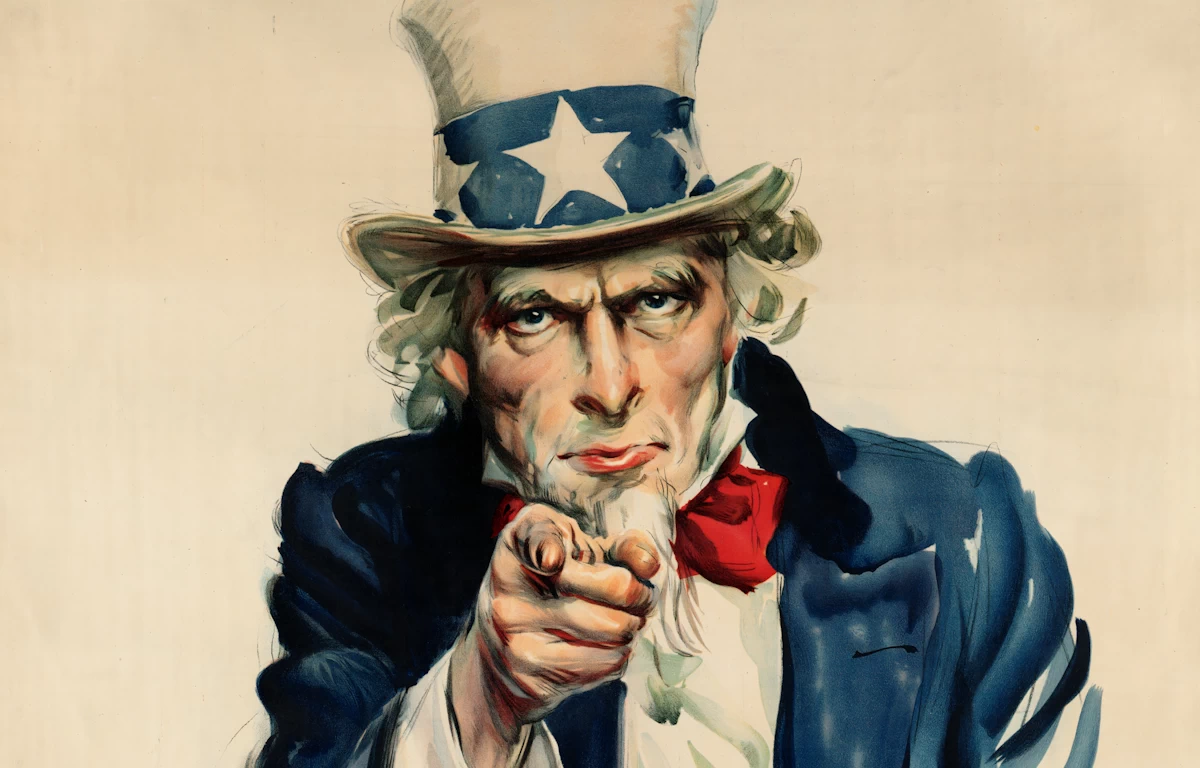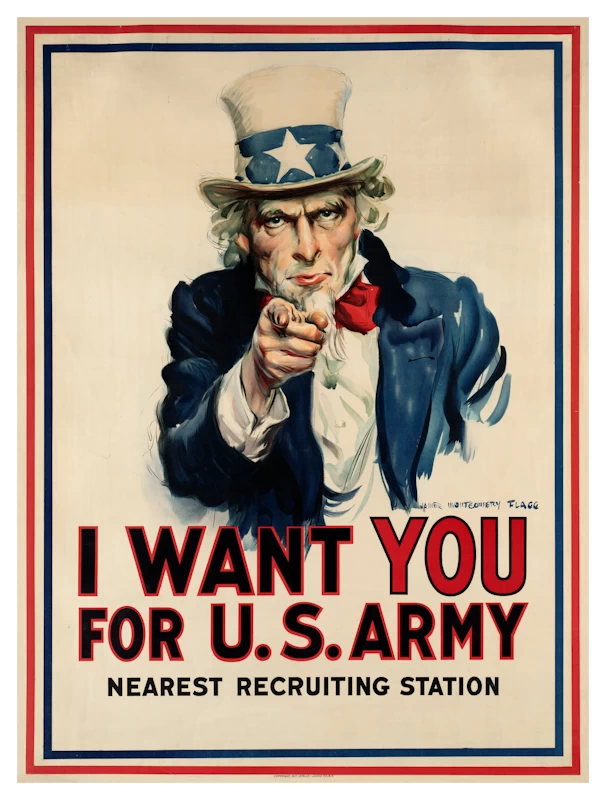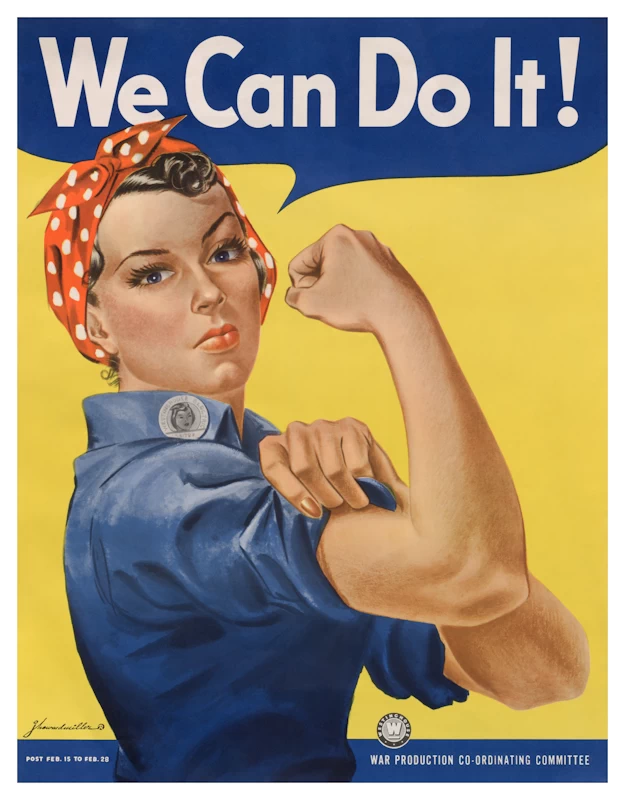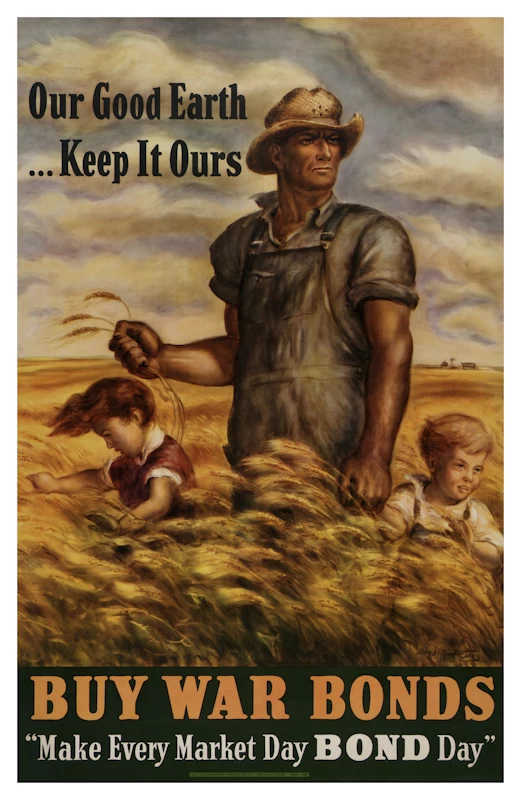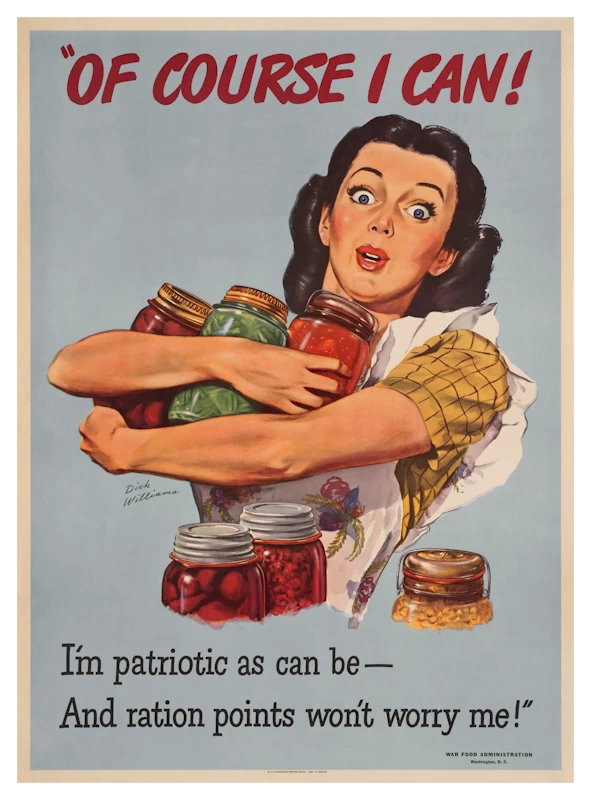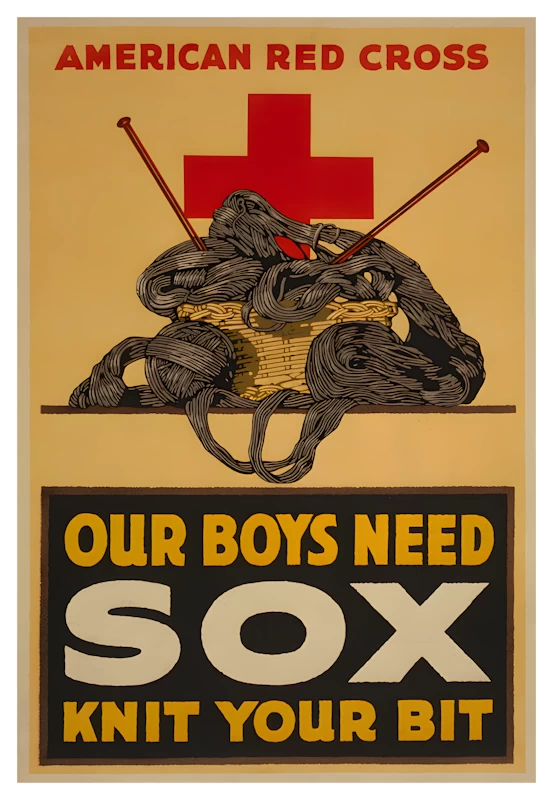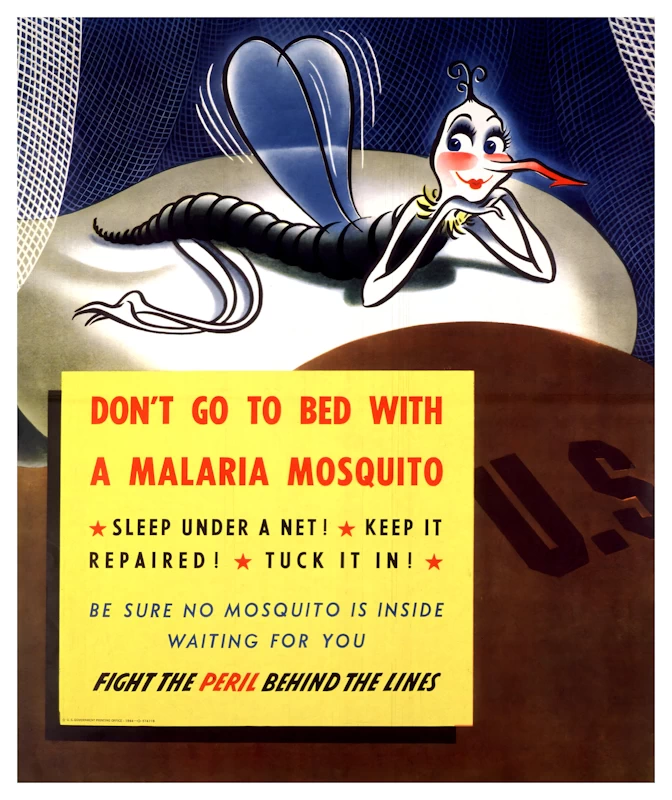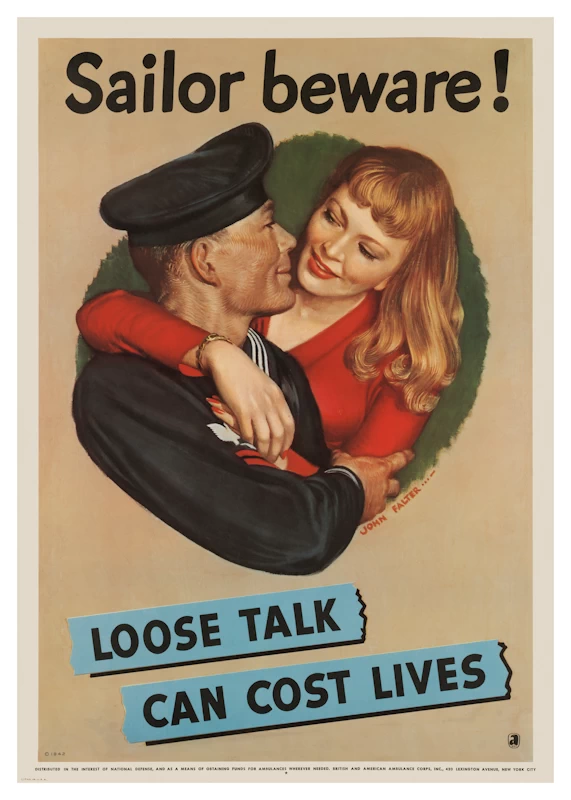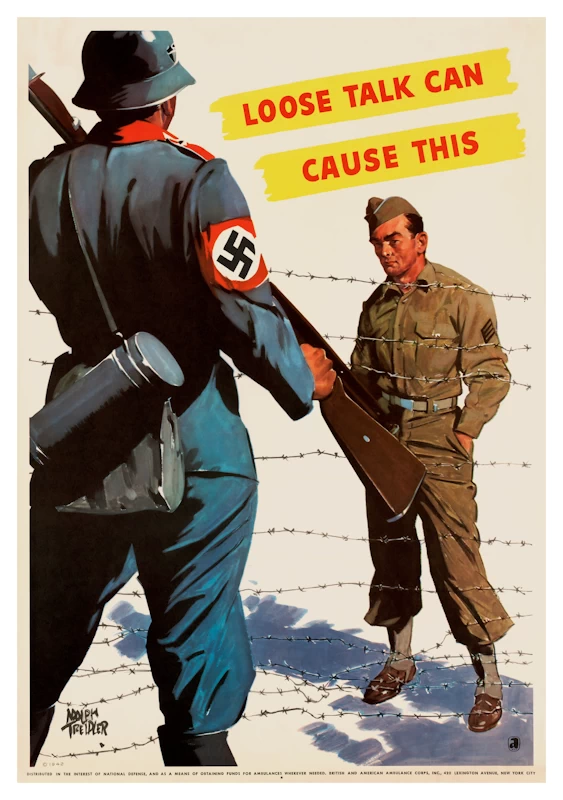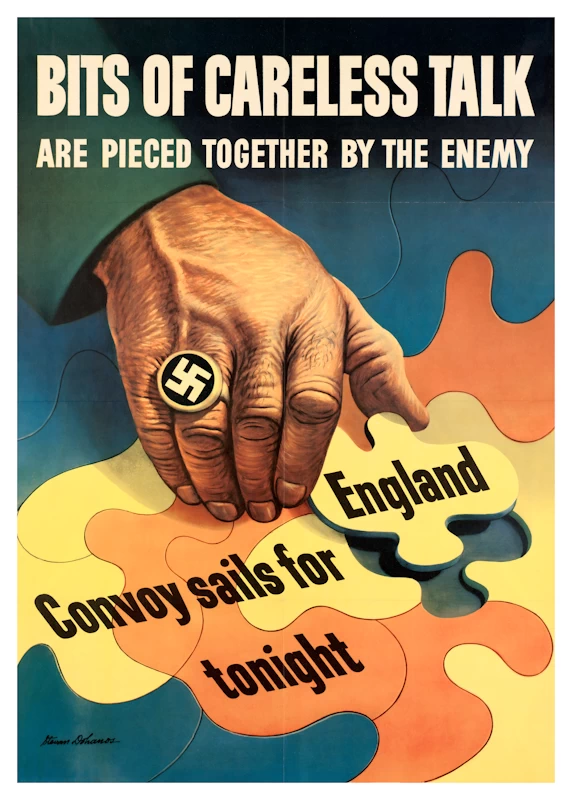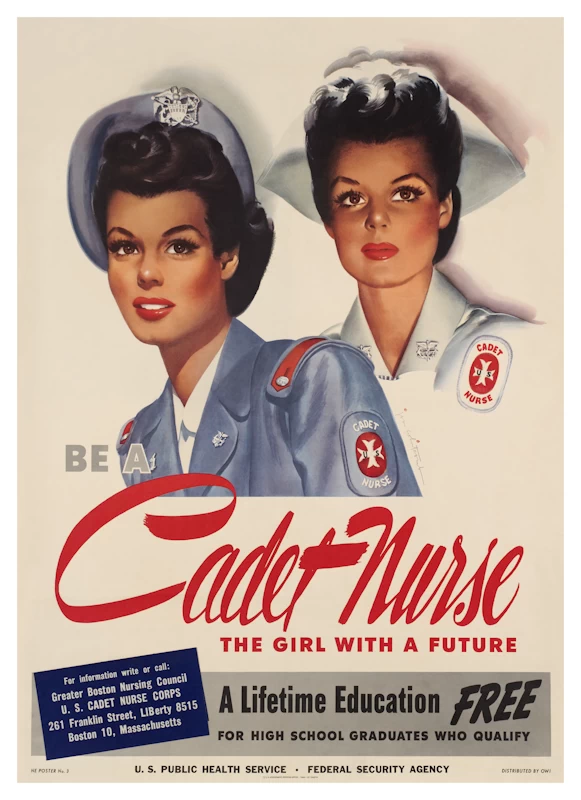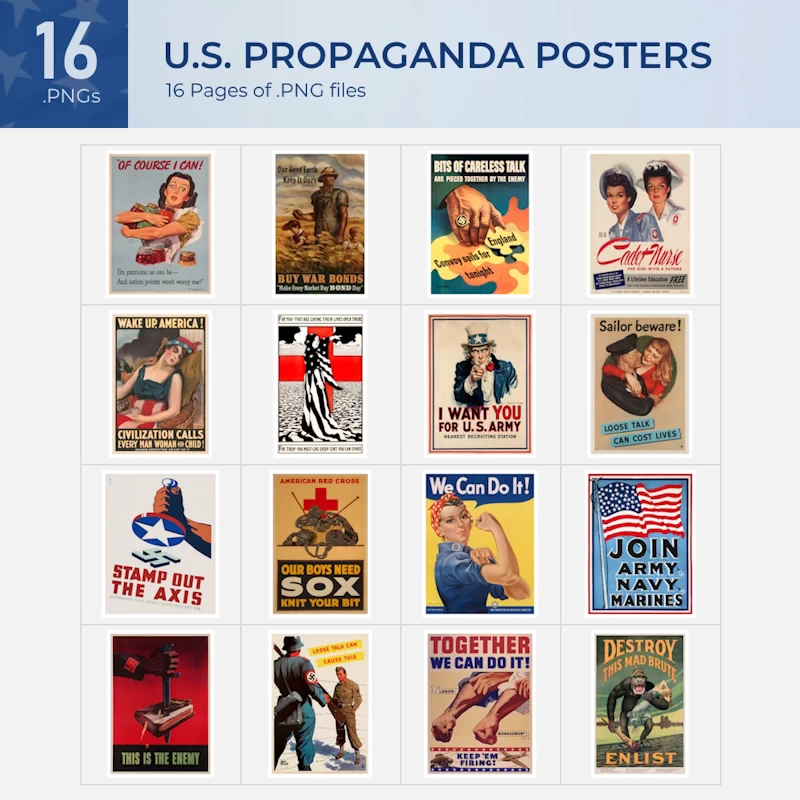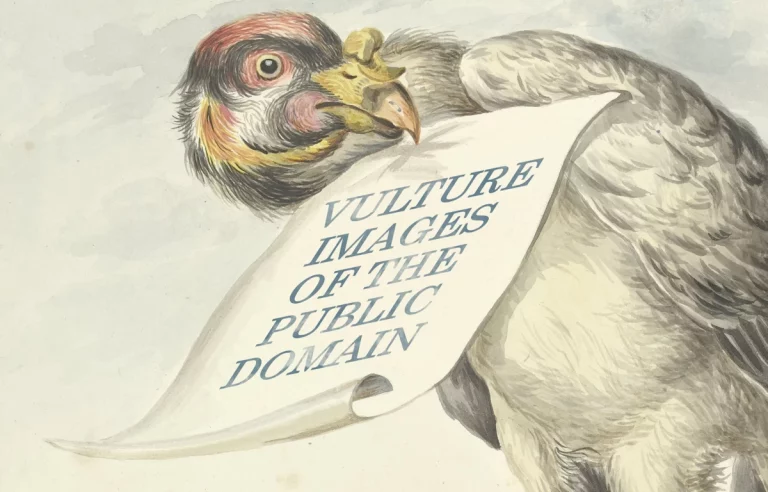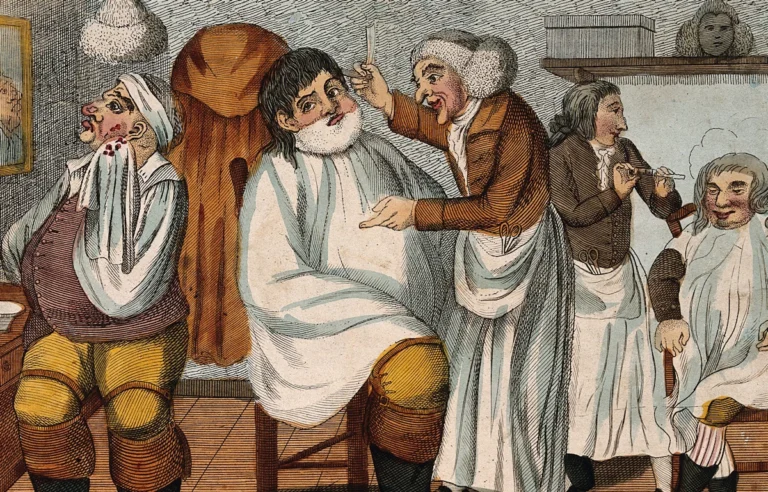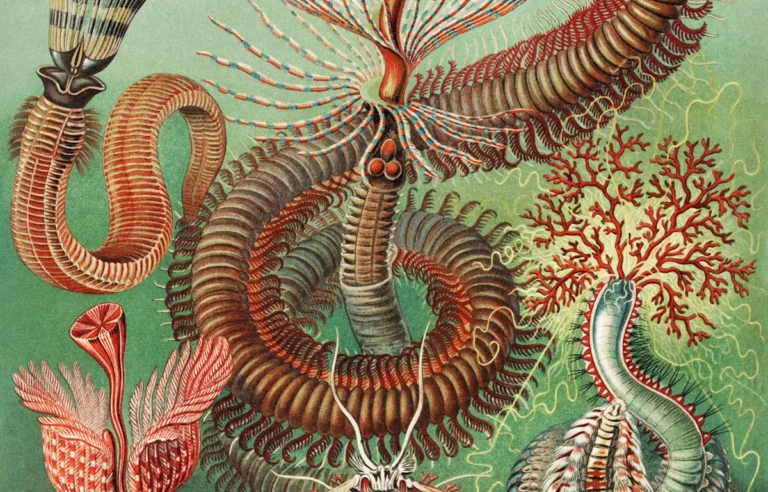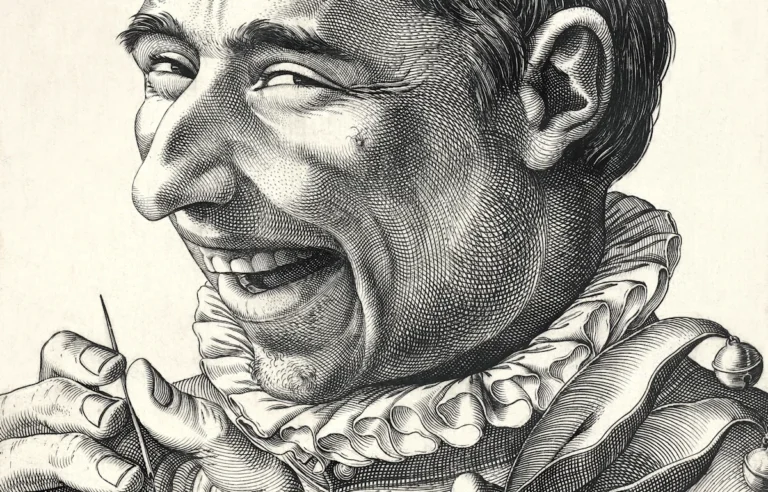American Propaganda Posters: Uncle Sam Wants You!
Art has an extraordinary ability to inspire, motivate, and unite people. In the 20th century, the American government used art, in the form of propaganda posters, everywhere—on walls, in shops, on street corners—to connect with the public. These posters played a vital role in shaping public opinion and mobilizing citizens for various causes.
From rallying troops to encouraging women to join the workforce, propaganda posters reflect the concerns, ambitions, and challenges of their time. Let’s explore some key themes in American propaganda posters and the stories they told about war, action, adventure, and empowerment.
Rallying the Nation
During times of war, American propaganda posters became essential tools for mobilizing support for the military, encouraging enlistment, and ensuring citizens contributed to the war effort.
One of the most famous posters in American history is James Montgomery Flagg’s “I Want YOU for U.S. Army” (1917). Featuring a stern-looking Uncle Sam pointing directly at the viewer, it demanded action. It became a rallying cry for enlistment during World War I and later resurfaced in World War II due to its effectiveness. Flagg’s poster exemplified how a simple, commanding message could evoke a sense of duty among viewers.
Fun fact: The artist used his own face for the model of Uncle Sam.
Another iconic example from World War II is “We Can Do It!” (1943) by J. Howard Miller. This poster, often referred to as the “Rosie the Riveter” image, depicted a determined woman flexing her bicep under the empowering slogan. Though initially aimed at boosting morale among female factory workers, it has since become a symbol of women’s empowerment and resilience.
In addition to enlistment, war posters also promoted financial contributions. “Buy War Bonds” campaigns featured striking imagery to emphasize the importance of funding the war effort. Posters like John Steuart Curry’s “Our Good Earth… Keep It Ours” (1942), asked Americans to buy war bonds by connecting financial contributions to the protection of their families. These posters were emotional and deeply personal, making abstract ideas like “funding the war effort” feel tangible and urgent.
Call to Action: Mobilizing the Public
Propaganda posters were not limited to the battlefield; they were also critical in mobilizing the general public to adopt new habits or take small actions that contributed to larger causes. These posters emphasized themes of conservation, unity, and civic responsibility.
During World War I, conserving resources became a major priority, and posters reflected this. The “Of Course I Can!” illustration by Dick Williams (1944) encouraged self-sufficiency and resourcefulness on the home front. Featuring a smiling woman proudly holding jars of preserved food, the poster promoted home canning as a patriotic duty, ensuring that more factory-produced goods could be sent to soldiers overseas. With its bold colors and confident message, it reinforced the vital role women played in supporting the war effort through everyday domestic contributions.
The “Our Boys Need Sox” poster (1918) encouraged the public to knit socks for soldiers. This poster appealed to people’s sense of duty and community, reminding them that even small acts of support made a difference in the war effort.
Public health campaigns also leaned heavily on posters. During the mid-20th century, the government used striking visuals to promote vaccination, hygiene, and disease prevention. For instance, “Don’t Go To Bed With A Malaria Mosquito” (1944) used bold visuals and a provocative message to stress the dangers of mosquito-borne disease. It served as a reminder for troops to use bed nets and repellents, reinforcing that disease prevention was just as crucial to the war effort as combat readiness.
During World War II, posters like “Sailor Beware” (1942), “Loose Talk Can Cause This” (1942), and “Bits Of Careless Talk Are Pieced Together By The Enemy” (1943) served as powerful warnings against careless conversations that could endanger troops. These posters used dramatic imagery to emphasize that even an innocent remark could be intercepted by the enemy. By instilling a sense of personal responsibility, they reinforced the idea that national security depended on civilians and soldiers alike keeping sensitive information to themselves.
Celebrating America's Beauty
Outside of wartime efforts, the government and private organizations used propaganda posters to promote travel and tourism, particularly to America’s National Parks. These posters celebrated the country’s natural beauty, encouraging citizens to explore and appreciate their homeland.
During the Great Depression, the Works Progress Administration (WPA) commissioned artists to create posters that not only boosted morale but also supported the economy by encouraging domestic travel. Some examples include Joshua Tree, Grand Canyon, and Yellowstone National Park posters, inviting citizens to experience these natural treasures firsthand.
The slogan “See America First” became a recurring theme in travel posters of the era. By promoting America’s beauty, these posters encouraged pride in the country and offered a sense of adventure during challenging times.
Redefining Women's Roles
Women were a key audience for propaganda posters, especially during the world wars. These posters aimed to recruit women into the workforce, encourage participation in war efforts, and to reshape how society viewed women and what they could achieve.
The aforementioned “We Can Do It!” by J. Howard Miller is a quintessential example of how women were encouraged to take on roles traditionally held by men. The image, which portrayed strength and femininity simultaneously, challenged gender norms and inspired millions of women to work in factories, shipyards, and other essential industries.
Similarly, the poster “Be A Cadet Nurse” (1944) by artist Jon Whitcomb featured two poised and confident nurses in uniform, presenting nursing as both a patriotic duty and a respectable career path. With its polished, idealized imagery, it aimed to inspire women to step up in a time of need, filling critical shortages in the medical field.
In addition to recruitment, posters often targeted women as homemakers and guardians of family welfare. While women were called to work in factories, they were also reminded of their roles as caregivers which balanced empowerment with the idea of supporting men and families. Posters also addressed health and safety, encouraging women to vaccinate their children and maintain cleanliness, reminding women of their responsibility in maintaining public hygiene during times of crisis.
The Lasting Legacy of American Propaganda Posters
American propaganda posters show us how art was used strategically to unite people, inspire action, and reflect the values of the time. Today, these posters are celebrated for their artistic and historical significance. Museums, collectors, and educators continue to study them, not just for their visual appeal but for what they reveal about America’s cultural, political, and social history. Whether urging citizens to fight, save, explore, or believe, propaganda posters left a lasting mark on the American story. Their messages may have been designed for a specific moment in time, but their impact—and their creativity—resonates to this day.


